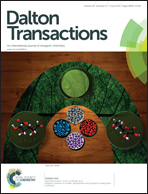A mechanistic study of Pd(OAc)2-catalyzed intramolecular C–H functionalization reaction involving CO/isonitrile insertion†
Abstract
The mechanism of the Pd(OAc)2-catalyzed intramolecular C–H functionalization reaction involving CO/isonitrile insertion was investigated with the aid of density functional theory calculations at the B3LYP level. The similarity between the CO and isonitrile systems includes the following: (1) the anagostic bonding mechanism rather than the concerted metallation–deprotonation (CMD) mechanism is operative for the C–H cleavage step, (2) the CO/isonitrile insertion step is rate-determining, and (3) the C–H activation and CO/isonitrile insertion steps are accomplished with Pd(II) and Pd(III), respectively. For the reaction including isonitrile insertion, the arene C–H activation step occurs after deprotonation of the imino group. However, for reaction including CO insertion, the arene C–H activation step is the first step of the reaction mechanism. The difference between CO and isonitrile systems in the reaction mechanism can be attributed to the difference in the oxidants used. In the reaction including isonitrile insertion, the high endergonicity of the oxidation step suppresses prior C–H activation and favors prior deprotonation of the imino group. In the reactions including CO insertion, the low endergonicity of the oxidation step allows prior C–H activation to occur.


 Please wait while we load your content...
Please wait while we load your content...